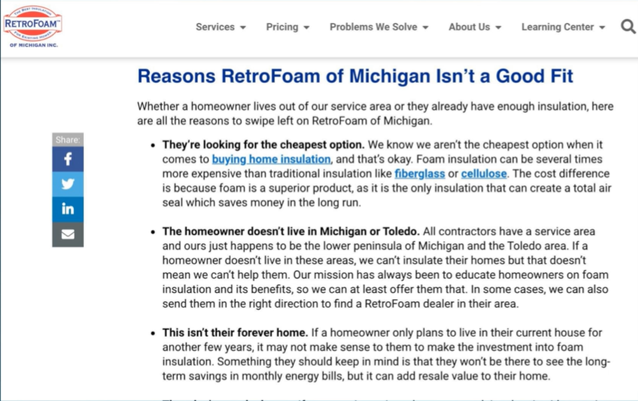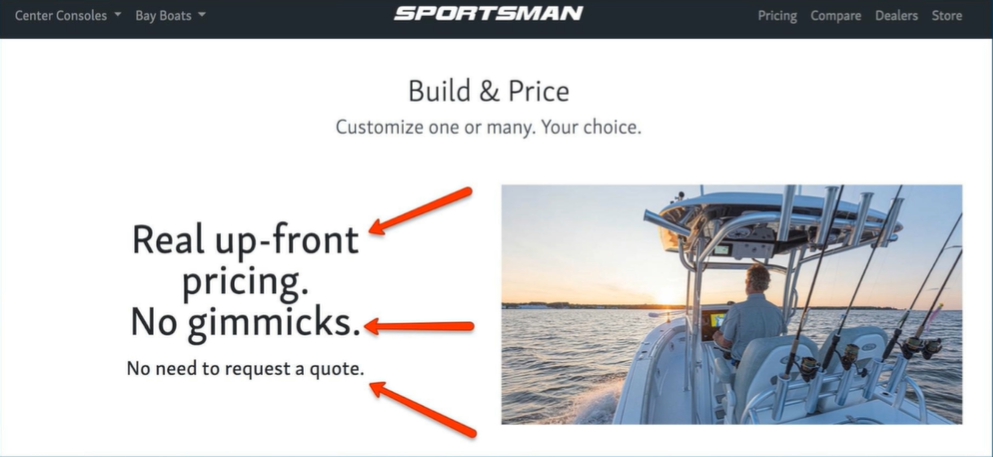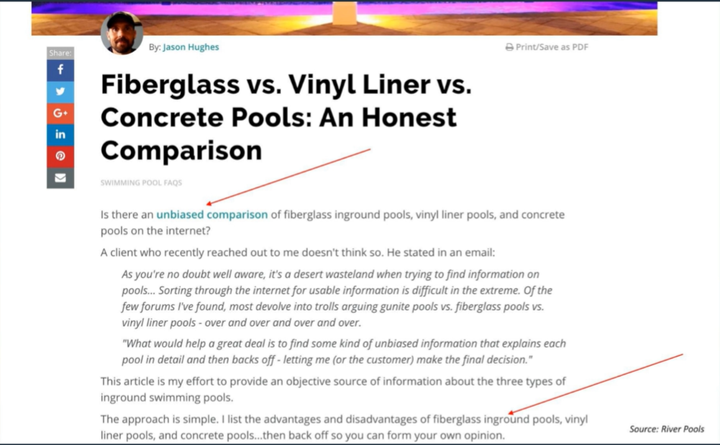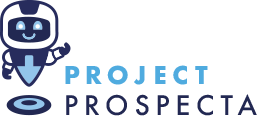Marcus Sheridan’s talk at INBOUND2021 was focused on one essential thing.
It’s critical to all businesses – whether you’re a manufacturer, supplier, or contractor. It’s the essential emotion we all seek.
Trust.
And as marketers, our success depends on the trust we were are able to build in the marketplace. Marcus’ session was about seven proven steps to become the most trusted voice in your space.
If you’re willing to be radically honest and supply answers no one else will, then you can stand out in a sea of sameness, and become the most trusted voice in your marketplace.
What is a trusted thought leader? Here’s an example. WebMD.
It’s the most visited site on the internet for medical information. Yet it has no formal qualification and is a partner to no governing body. How did they become the go-to source when you have a strange rash and want to make it go away? They helped you identify it and gave you some suggestions for how to get it taken care of. They anticipated your question and provided an answer.
This is how WebMD did it and your business can do the same thing. It can become the internet authority on all things related to your product or service. What stops you from being the guide or thought leader in your space?
If you want to become this you must:
- Talk about what others won’t
- Show what others don’t
- Sell in a way that others aren’t (super buyer-focused, even to the point that your competition thinks it’s unfair)
Marcus offered one more thought before digging into the seven steps.
He emphasised the importance of focusing on right goals. The right goals are unchanging principles. Like trust.
Tactics and channels change. 20 years from now LinkedIn may or may not be part of your content distribution strategy. But if you work towards a principle, you know it’s going to be important 20 years from now.
Ok, let's dig into the seven steps.
Content Trust Key #1:
Be willing to talk about who you are and are not a good fit for.
What? That’s crazy. TELL people you are NOT a good fit for them? Tell people, we don’t think you’re right for US?
It sounds crazy, but the moment you are willing to do this, that’s when people trust you.
Here’s an example from an insulation contractor, RetroFoam. They said they were not a good fit for you if:
- You’re looking for the cheapest option
- You don’t live in the area
- This isn’t your forever home
They wanted to make sure people knew who their product wouldn’t work for, so the people who it would knew they were honest, and realised they were a good fit.
As you can see in the article below, they’re not snarky, not sarcastic, just transparent.

Content Trust Key #2:Talk about pricing, costs, rates, etc
You may think: we’re a solutions provider, we offer consultancy, our product or service is too complex for a pricing guide. We can’t do that.
But what’s the one thing you are wondering about when you’re looking at a product? Price.
Why would your audience be any different? And it’s a good principle to treat them as you’d like to be treated.
You don’t have to give exact figures. But you should talk about it.
Talk about these five things
- What drives the cost of the product service up
- What drives it down
- Why are some companies in your space so expensive
- Why are some companies in your space so cheap
- Where do you fall?
Here’s an example of a brand that is doing it well. Sportsman boats. They’ll give you an up-front price without picking up the phone or giving a quote. If you can’t work out how to do that, you’ve just made your buyers life a lot better. You’ve just built trust.

Content trust key #3: Learn the skill of “Disarmament”
The first thing a hostage negotiator says as he is trying to defuse a situation is, “put your guns down”.
If someone doesn’t let their guard down they can’t build a relationship of trust. If they do, then they can have a conversation.
You have to do the same thing with your reader. And the best way to do this is with radical candor. Being totally honest.
It shocks the reader, and they let their guard down.
Here’s an example from Marcus’ pool business. It honestly compares the benefits and drawbacks of three different types of pools. He addresses even the weaknesses of the types of pools he sells. And they say up front that the reason they are writing the article is because there are no good comparison blogs out there.
How many times have you seen blogs about why “this product is the best”? That’s how most companies approach writing about their product. They can’t detach from the outcome. When you detach from the outcome you can communicate honestly, and then give your reader space to make their own decision. Then they trust you.

Content Trust Key #4: Show your “secret sauce”
People are interested in how you do what you do.
You may think, “what we produce is boring and technical”.
Marcus’ video on YouTube showing how swimming pool materials are manufactured has tens of thousands of views. And it’s boring and educational.
If you are willing to show your secret sauce, people will lean in, and take a look.
Content Trust Key #5: Be willing to compare, without bias
Marcus took comparison a step further than comparing materials. He suggests even comparing your company to others. And not just to slag off the competition. In fact, he says not to do that. To highlight what they do well, and to highlight what you do well.
Where do you get the hutzpah to speak well of your competitors? Marcus chalks it up to an abundance mentality. There’s enough out there for everyone. And you’re not going to build trust with your audience by saying your competitors do a poor job. They won’t believe you. They see through you.
Instead, if you honestly evaluate your offer alongside your competitors, you have a chance to gain their trust, and likely their business.
Marcus has a blog comparing his agency to two other similar agencies, and it is highly effective for growing their business.
Content Trust Key #6: Be willing to talk about the negatives everyone is searching and asking about, but no one wants to address
There are problems with every product. No one expects a product to be perfect. The problem is that we don’t address the problems.
Marcus’ advice is to talk about the common problems with your products or services.
For instance, a metal roofing company pulled lots of traffic with a video about the problems with metal roofs. Of course they did. People who are looking at problems with metal roofs are probably looking to buy one.
Content Trust Key #7: Talk About the Competition
Don’t be afraid to talk about the competition. Even in a positive way. This will pull traffic when people are searching for them, and they will find unbiased information about them.
Conclusion
Seven great points that, if implemented, can help you build trust with your audience. You can become the thought leader in your space. And this content can form the offers in all of your marketing materials too. You can see what people are interested in, and use that in Project Prospecta campaigns.
The more you create content for your audience, and win their trust, the more equipped you are with the marketing materials to help you succeed.




